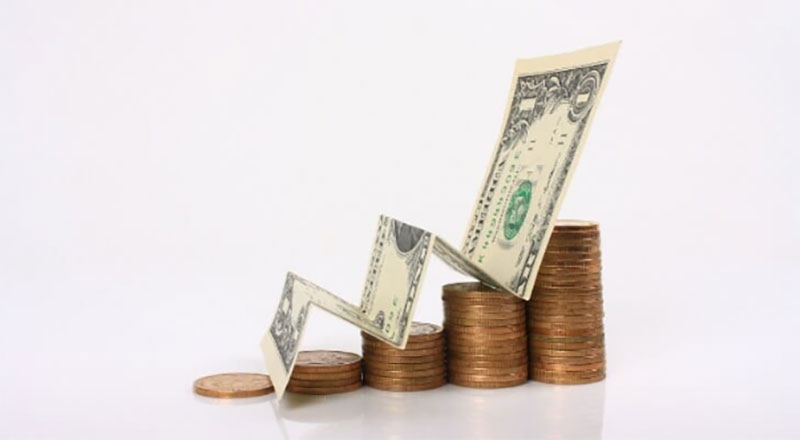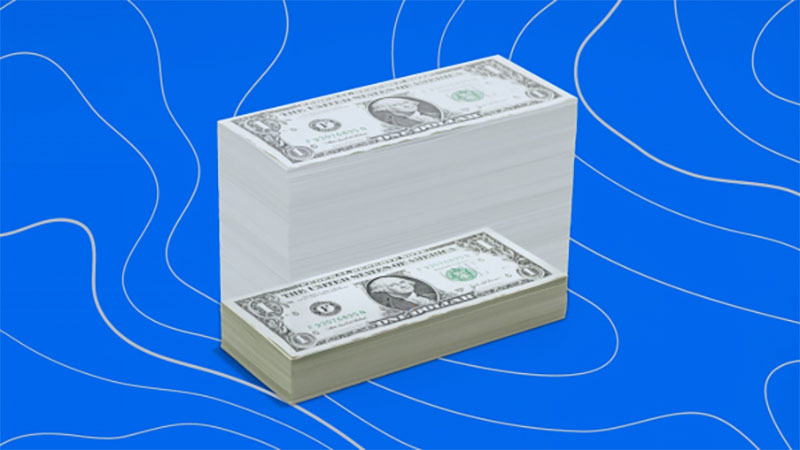If you're looking for a stable, low-risk investment opportunity that will earn greater returns than conventional CDs, you may have come across the terms "bump-up" and "step-up" CDs. But what are they? Bump-Up or step-up certificates of deposit (CDs) are investment vehicles designed to offer higher interest rates than traditional fixed-rate certificates of deposit.
They provide a guaranteed return with limited downside risks, making them popular for investors seeking financial security while taking advantage of potential growth opportunities in the market.
Bump-Up And Step-Up CDs

Bump-up CDs are a type of certificate of deposit (CD) that allow investors to "bump up" the interest rate paid on their investment during the life of the CD, usually one or two times. This means that if market rates rise, as an investor with a bump-up CD, you can take advantage and increase your return by taking advantage of the higher rate.
However, once you have exercised this option, there is no further opportunity to do so again until your CD renewal date.
Step-up CDs, meanwhile, provide investors with multiple opportunities to increase their returns by allowing them to step up their interest rates multiple times throughout the life of the CD.
Unlike bump-up CDs, which are generally limited to one or two bumps, step-up CDs allow investors to increase their rate as many times as they wish during the life of the CD.
How does a bump-up CD work?

A bump-up CD is a certificate of deposit (CD) that allows investors to increase the interest rate they receive at certain times. Generally, the issuer will set a base rate and allow for one or two bumps during the life of the CD.
Each time an investor exercises their bump-up option, they can choose to increase the rate by a predetermined amount. After making this decision, however, there is no further opportunity to change it until their CD renewal date.
For example, if you purchase a 5-year bump-up CD with an initial rate of 1.85%, you can exercise your option one or two times throughout the CD and increase your rate to 2.10%. Once the option has been exercised, you cannot further adjust it until your CD renewal date.
How does a step-up CD work
Step-up CDs are similar to traditional fixed-rate CDs, requiring a minimum deposit and offering a guaranteed return for a predetermined period. However, the key difference is that with a step-up CD, you can choose to increase your interest rate at any point during the life of the CD.
At each step up, the interest rate will reset and be higher than before, providing investors with an increasingly higher return over time. For example, if you purchased a 3-year step-up CD with an initial 1% rate and stepped up twice throughout its term once after one year and again after two years your final annualized yield would be significantly higher than 1%.
Step-up CDs provide investors with flexibility and the potential to increase their returns while maintaining the security of a fixed-rate investment.
When should you use a step-up or bump-up CD?
Investors should carefully consider when investing in bump-up or step-up CDs makes sense. Generally, the decision will come down to your individual investment goals and risk tolerance. If you are an investor looking to increase your returns while minimizing risk, a bump-up or step-up CD may be a good option.
However, if you expect interest rates to remain relatively stable over time, investing in a traditional fixed-rate CD may be more beneficial. While these CDs don't offer the same opportunity for upside potential as bump-ups and step-ups, they provide investors with guaranteed returns at low-risk levels.
Benefits of bump-up CD
- Access to Higher Returns: Bump-up CDs offer investors the chance to increase their returns by taking advantage of rising interest rates.
- Flexibility and Control: With a bump-up CD, you have the power to decide when to exercise your option and can choose to wait until the market is more favorable before locking in a higher rate.
- Limited Risk: Despite offering greater potential for upside growth, bump-ups are generally considered low-risk investments since they provide investors with guaranteed returns regardless of market conditions.
Drawbacks of bump-up CD
- Limited Upside Potential: With a bump-up CD, your returns are limited to the predetermined rate set by the issuer and can only be increased up to two times throughout its term.
- No Access to Funds Until Maturity: As with most CDs, once you invest in a bump-up CD, you cannot access your funds until the CD matures. If you need access to cash before then, you may incur penalties for early withdrawal or even lose your invested capital.
- Potential Opportunity Cost: If market rates rise steadily over time, but investors don't take advantage of their bump-up options, they could potentially miss out on higher returns due to the limited nature of the product.
Benefits of a step-up CD
- Access to Higher Returns: Step-up CDs allow investors to increase their returns multiple times throughout the life of the CD, providing them with a consistently increasing return over time.
- Flexibility and Control: Unlike traditional fixed-rate CDs, step-up CDs give investors greater control over when they can adjust their rates. This allows them to wait for more favorable market conditions or take advantage of any short-term rate increases that may occur during the term.
- Low-Risk Investment: Despite offering greater potential for upside growth, step-up CDs are still considered low-risk investments since they provide investors with guaranteed returns regardless of market conditions.
Drawbacks of a Step-Up CD
- Limited Upside Potential: While you may be able to increase your rate multiple times throughout the life of the CD, your returns are still limited to those predetermined by the issuer.
- No Access to Funds Until Maturity: As with traditional CDs, once you invest in a step-up CD, you do not have access to your funds until it matures, meaning that if you need access to cash before then, you may incur penalties for early withdrawal or loss all invested capital.
- Limited Availability: Step-up CDs are not as widely available as traditional fixed-rate CDs, which may be difficult to find and compare.
FAQS
What banks offer a bump-up CD?
Many banks offer bump-up CDs, including Bank of America, Wells Fargo, and Chase. Before investing, important to shop around and compare different banks' rates and terms before step-up securities.
What are step-up securities?
Step-up securities are investments that allow investors to adjust their interest rate or yield multiple times throughout the life of the security. These investments give investors greater control over when they can increase their returns while offering them the security and low risk of a fixed-rate investment.
What is no penalty CD?
No penalty CDs, also known as "liquid CDs," are deposit accounts that allow investors to withdraw their money at any time without incurring any penalties or fees. These investments usually offer lower yields than traditional fixed-rate CDs but provide greater flexibility and access to funds when needed.
Conclusion
Considering the advantages and disadvantages of bump-up and step-up CDs, it is important to note that these can be beneficial investments, depending on the individual's financial goals. They offer attractive interest rates due to their flexible terms and allow individuals to earn more than they could with MySavingsAccounts alone. However, it is also essential for individuals to consider the risks involved in these types of investments, including rising interest rates and early withdrawal penalties.

What You Need To Know Before Putting Your Money In A Bond Mutual Fund

Personal Line of Credit vs. Credit Card: How They Compare

What is Payday Loan Consolidation?

How exactly does Eventbrite make money?

Stores That Don't Take Credit Cards

An Overview of the Development of the Contemporary Portfolio

Mortgage Prequalification Explained: What It Is and How to Achieve It

Tax Implications of Owning Rental Property - A Simple Guide

Financial Clarity: Key Insights from the NerdWallet 2024 Tax Report

Best Finance Magazines

Credit Card Dispute Process
